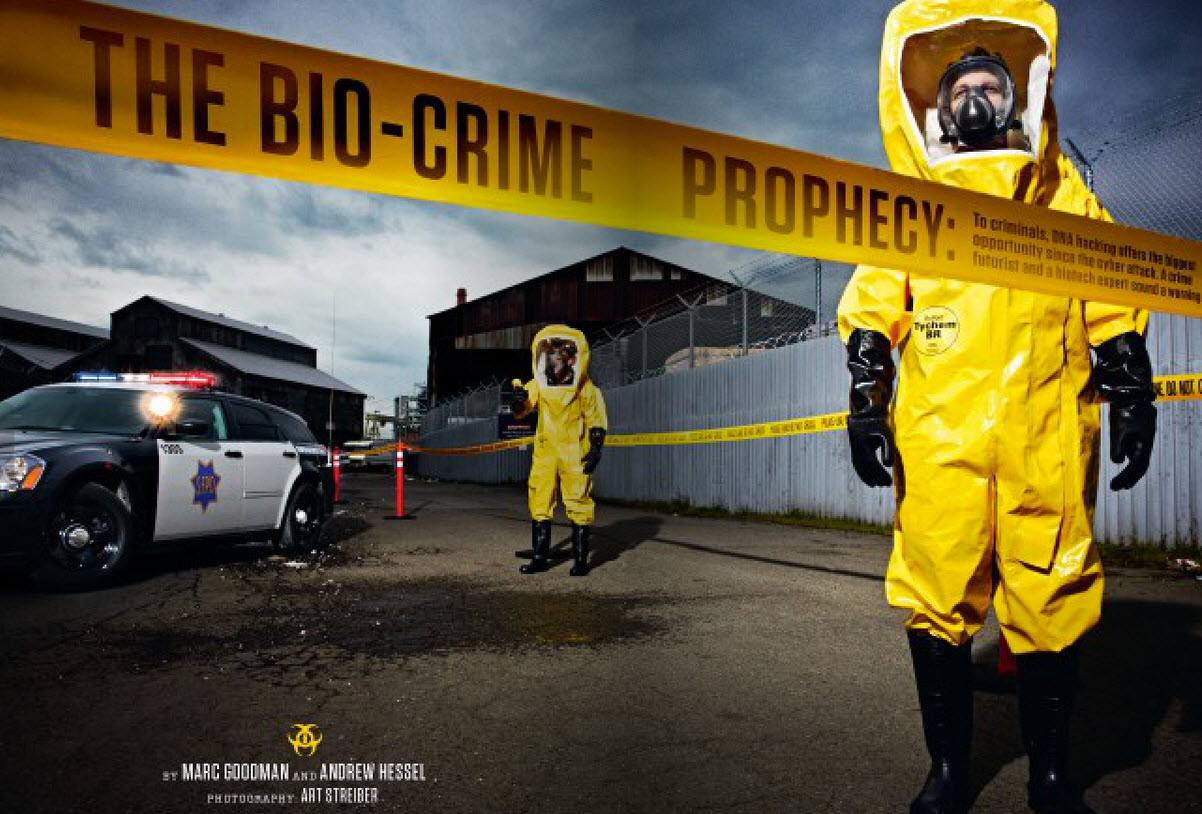A global viral vector: reality check
May 31, 2013 by Andrew Hessel
 In Dan Brown’s Inferno [see book review | Dan Brown’s Inferno], an airborne virus permanently modifies the DNA in human cells in one third of the population of the world.
In Dan Brown’s Inferno [see book review | Dan Brown’s Inferno], an airborne virus permanently modifies the DNA in human cells in one third of the population of the world.
We asked synthetic biologist/genomic futurist Andrew Hessel to comment on this scenario (his co-authored “The Bio-Crime Prophecy” is the cover story in the current issue of Wired UK).
Q: How realistic is Brown’s scenario and what is “”predetermined DNA”?
In general, viruses are quite versatile. We’re familiar with the airborne spread of many viruses, like colds and flu, so there is nothing new here. There are trade-offs between viral virulence and infectivity, though, because if a virus is too deadly, it can potentially kill all its hosts before it has a chance to spread.
The virus described in this book is highly contagious and does not cause overt disease. Such a virus can potentially infect a large fraction of humanity. Common colds, for example.
While many viruses just create a short-lived “biological chain reaction,” some viruses are also capable of delivering genetic information into cells — i.e., acting as a vector. This ability is used by researchers to develop gene therapies, for example, where functional copies of a defective gene are delivered to damaged cells.
HIV is an example of a retrovirus, a class of virus that stably inserts its genetic material into the genome of the host. Here’s an article where HIV was used to deliver genes that repaired a girl’s leukemia.
Some viruses have already been linked to sterility. In women, some viral infections can lead to scarring, etc. that can increase infertility.
Synthetic biology potentially makes it easier for researchers to “mix and match” features of natural viruses to make new combinations that would not be seen in nature. And synthetic virology could very well become a powerful tool of good in the future. It was recently used to make new flu vaccines in record time.
As used in this book, “predetermined DNA” is genetic code that has been engineered for insertion into host.
Q: What about the notion that it could make one in three people sterile?
Without reading the entire book, perhaps the trickiest part of this book is putting it all together. Making one in three people sterile would probably not significantly change the arc of human population growth for long. First of all, it would only really matter if you did this to women, since men produce an excess of gametes.
Even with one in three women rendered infertile, in IVF therapies, multi-ovulating drugs are frequently used, allowing plenty of eggs to be harvested. More recently, both human male sperm and, more recently, eggs, have been made using stem cell technologies.
So, overall, no long term effects on humanity — just an increase in business for fertility centers. Moreover, there’s no reason that a viral fix couldn’t be made just as easily as the “disease” described in this book: using the same technology, a contagious cure could be released.
Andrew Hessel is KurzweilAI Biotechnology Editor. He is a Distinguished Researcher with Autodesk Inc.’s Bio/Nano Programmable Matter group, based out of San Francisco, and the co-founder of the Pink Army Cooperative, the world’s first cooperative biotechnology company, which is aiming to make open-source viral therapies for cancer. He is also on the faculty in Bioinformatics and Biotechnology at Singularity University.